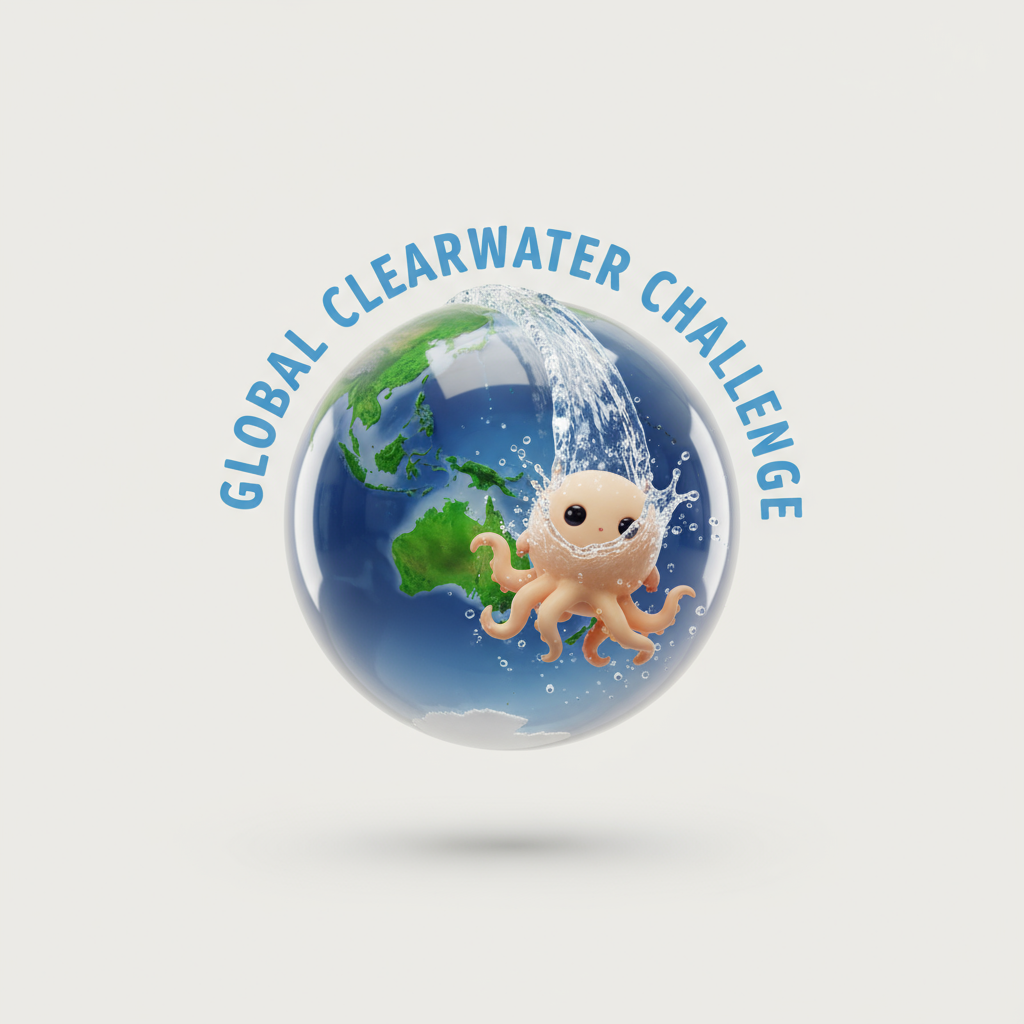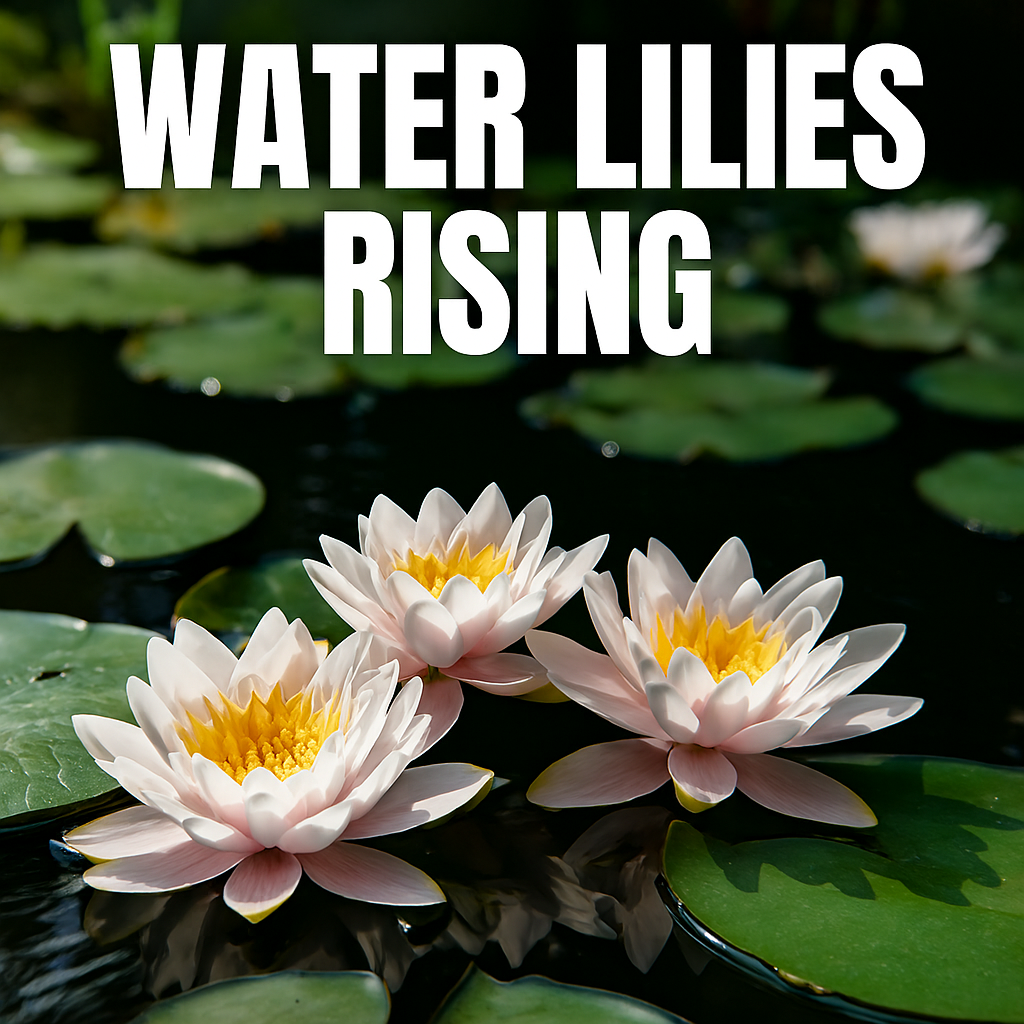
Sign Up for the Global Clearwater Challenge Newsletter
Country vs Country
City vs City
Town vs Town
Village vs Village
Community vs Community
College vs College
School vs School
Company Vs Company
The Challenge
This isn’t a contest to crown the cleanest waterway, It’s a global call to action – what can we do in just one year to clear our waterways?
From bustling cities to quiet villages, from classrooms to coastlines, the Global Clearwater Challenge invites everyone to step up, team up, and clean up.
Paris did it. We can too.
How It Works
We start at the source – those first precious drops at the top of the hill – and work our way down to the sea. Every stream, every drain, every ripple matters.
Whether you’re a student, a mayor, a gardener, or a community leader, your local effort becomes part of a global wave. We will be rolling out The Global Clearwater Challenge over the next few weeks until launch day, giving everyone a “Heads Up” so they’ve got a little time to prepare.
Sign Up for our Newsletter for Constant Updates
Challenge your neighboring town, rival school, or sister city.Track your progress. Share your wins. Inspire others.
Because when we compete to restore, we all win.
The Global Clearwater Challenge is a Planetary Challenge for Ecological Restoration
Global Clearwater Challenge By The EcoReef Project is a challenge for anyone to be involved in.
Water is Earth’s living archive. It flows through glaciers, wetlands, and storm drains, carrying the residue of ritual, industry, and neglect. From sacred springs to concrete culverts, it encodes our histories and exposes our values. It is both elemental and editorial—shaping landscapes, revealing fractures, and binding ecosystems to culture.
But the rhythm has broken. Toxic runoff, infrastructural decay, and cultural amnesia have turned vibrant waterways into corridors of loss. The Global Clearwater Challenge is a call to repair—not through guilt, but through shared agency. This is not a purity contest; it is a participatory restoration. Every community, regardless of scale, can contribute. Whether beside a river or a roadside drain, each act reclaims symbolic and ecological integrity.
The challenge invites cities, schools, companies, and collectives to restore their local water systems and share their stories. Restoration is both practical and poetic. By cleaning water, we clean memory. By restoring flow, we restore meaning. The challenge begins with a single gesture and culminates in a planetary wave.
Repair Together
This is not a race to the cleanest stream—it is a reckoning with what we’ve neglected. The Global Clearwater Challenge reframes restoration as a shared act and as a challenge. Participants are invited to challenge peers, rival institutions, or sister cities—not to dominate, but to inspire. Every cleanup becomes part of a larger narrative of ecological renewal. Whether a school audits its drains or a company redesigns its runoff systems, each act contributes to the global flow.
The challenge is modular, scalable, and emotionally resonant. No expertise is required—only intention and care. Symbolic gestures are welcomed alongside measurable impact. A mural beside a canal, a poem about a stream, or a ritual at a riverbank can be as powerful as removing debris. Restoration is not only physical—it is cultural, psychological, and editorial.
Waterways are reframed as living texts, not waste channels. The challenge invites us to read them, restore them, and rewrite their meaning. When we compete to heal, we all win. The framework is open-source, adaptable, and rooted in narrative clarity. Every act becomes part of a planetary archive. And every participant becomes a co-author of ecological transformation.
Start Where You Stand
The challenge begins where water first gathers—springs, gutters, snowmelt, and storm drains. From there, we trace its journey downstream, mapping tributaries, culverts, and runoff zones. Participants start with what’s visible and local: the drain behind the school, the creek beside the park, the industrial runoff near the warehouse. Each effort grows over time and can be documented, tracked, and shared through a global dashboard.
Progress is continuously measured for visibility, engagement, and for information for all —not just volume. Communities issue challenges, share wins, and inspire others through storytelling and data. The rollout unfolds in phases, allowing time to prepare, organize, and strategize. Toolkits, templates, and visibility metrics are distributed via the newsletter. The challenge is designed to be inclusive—individuals, institutions, and collectives all contribute.
Whether planting reeds, redirecting stormwater, or removing plastic waste, each action becomes part of a planetary wave. The journey is ecological, editorial, and emotional. We start with the first drop. We end with the ocean. But the true destination is transformation. Every ripple counts. And every story matters.
Restore with Ritual
Restoration is not limited to physical labor—it includes symbolic acts that reframe our relationship with water. A poem beside a polluted stream can be as powerful as a cleanup crew. A ritual at a riverbank can restore cultural memory. Editorial gestures—murals, performances, installations—create emotional resonance and public visibility. These acts invite reflection, dialogue, and participation.
Communities are encouraged to document and share their symbolic interventions. Each becomes part of a planetary archive of ecological storytelling. Schools might choreograph dances about water cycles. Artists might build installations from reclaimed debris. Elders might lead ceremonies to honor ancestral waters. These rituals are not decorative—they are restorative.
They help communities reclaim agency and dignity. They transform forgotten spaces into sites of meaning. They invite others to see water not as waste, but as witness. The challenge recognizes that healing is both material and metaphorical. Symbolic acts deepen engagement and expand the narrative. They turn restoration into ritual. And they remind us that every flow carries a story.
Let the Numbers Speak
The Global Clearwater Challenge treats data as narrative, not abstraction. Every cleanup effort generates metrics—volume removed, biodiversity restored, participation logged. They reveal patterns of neglect and resilience. They show where healing is happening and where more is needed.
Participants are encouraged to share data with editorial clarity. Dashboards, maps, and visualizations become tools of storytelling. Schools might track drain audits over semesters. Cities might publish runoff reduction reports. Companies might release transparency logs on water usage. These metrics build trust, inspire replication, and reinforce accountability.
Data becomes a form of ecological memory. It allows communities to see their progress and refine their strategies. It transforms restoration into a living archive. The challenge provides templates for data collection and storytelling. Every number is a sentence. Every graph is a paragraph. And every dataset becomes a chapter in the planetary restoration story.
Rivalry with Purpose
| Matchup | Example | Symbolic Focus | Impact Signal |
|---|---|---|---|
| Nation vs Nation | Australia vs France | Policy modeling | Waterways restored |
| City vs City | Sydney vs Toronto | Civic pride | Drain audits, events |
| Town vs Town | Byron Bay vs Margaret River | Local stewardship | Volume cleaned |
| Village vs Village | Arnhem Land vs Faroe Islands | Cultural ritual | Storytelling, tradition |
| Community vs Community | Inner West vs Fremantle | Grassroots mapping | Participation, visibility |
| Campus vs Campus | USyd vs UC Berkeley | Youth leadership | Student-led data logs |
| School vs School | Primary & high schools | Early education | Cleanup days, curriculum |
| Company vs Company | Atlassian vs Siemens | Corporate runoff | Waste audits, transparency |
This framework turns rivalry into restoration. Every matchup is a story. Every metric is a signal. Every win is a ripple. Let the challenges begin.
Infrastructure as Ecology
Stormwater systems, culverts, and drains are often treated as invisible utilities—but they are ecological arteries. The challenge invites communities to reimagine infrastructure as habitat, narrative, and opportunity. A redesigned outlet can reduce flooding and restore biodiversity. A repurposed drain can become a site of education and ritual. Every pipe, grate, and channel is part of the planetary circulatory system.
Participants are encouraged to audit, map, and reframe their infrastructure. Schools might trace the path of runoff from playground to creek. Cities might redesign culverts to support native species. Companies might retrofit drainage systems to reduce chemical discharge. These interventions are both technical and symbolic. They restore function and meaning.
Infrastructure becomes a canvas for ecological storytelling. It is no longer hidden—it is honored. The challenge provides templates for mapping, redesign, and documentation. Every outlet is a threshold. Every retrofit is a gesture. And every system becomes part of the planetary flow.
Language of the Watershed
Every watershed has a voice—shaped by geology, culture, and memory. The challenge invites participants to listen, translate, and amplify that voice. Local names, ancestral stories, and indigenous knowledge become editorial anchors. A stream is not just a feature—it is a character. A river is not just a boundary—it is a lineage.
Communities are encouraged to research and restore the original names of their waterways. Elders might share oral histories. Students might map forgotten tributaries. Artists might create typographic installations. These acts restore linguistic and ecological coherence. They reconnect place to story.
Language becomes a tool of restoration. It deepens emotional engagement and cultural accountability. The challenge provides guides for naming, mapping, and storytelling. Every word is a bridge. Every name is a memory. And every watershed becomes a living archive.
Children as Custodians
The challenge recognizes children not just as future stewards—but as present-day custodians. Their curiosity, creativity, and clarity make them powerful agents of change. A child planting reeds beside a drain is performing editorial restoration. A classroom mapping runoff is rewriting the story of its suburb. Youth-led initiatives are central to the challenge’s emotional intelligence.
Schools are invited to integrate water restoration into curriculum, ritual, and play. Science classes might test water quality. Art classes might design canal murals. Literature classes might write stream poems. These acts build ecological literacy and emotional resonance. They teach responsibility without guilt.
Children become co-authors of the planetary archive. Their voices are not symbolic—they are strategic. The challenge provides toolkits for educators, templates for student-led audits, and visibility platforms for youth storytelling. Every child is a ripple. Every classroom is a tributary. And every schoolyard becomes part of the global flow.
Editorial Ecology
The Global Clearwater Challenge is not just an environmental campaign—it is an editorial ecosystem. Every act of restoration is a sentence. Every stream is a paragraph. Every watershed is a chapter. Participants are not volunteers—they are authors. The planet is not a backdrop—it is a manuscript.
This framework treats ecological repair as narrative repair. A drain audit becomes a footnote in a larger story. A school mural beside a canal becomes a visual annotation. A company’s runoff redesign becomes a rewritten paragraph in the industrial chapter. These gestures are not isolated—they are interlinked through symbolic flow.
Editorial ecology invites us to curate, not just clean. It asks us to map meaning, not just remove waste. It reframes infrastructure as syntax, and water as grammar. The challenge provides templates for storytelling, mapping, and symbolic indexing. Participants are encouraged to build anchor pages, tag tributaries, and link restoration efforts across platforms.
This is not just about visibility—it’s about coherence. Every restored stream strengthens the planetary narrative. Every documented act reinforces editorial integrity. The challenge becomes a living archive of ecological transformation. And every participant becomes a contributor to the planetary canon.


